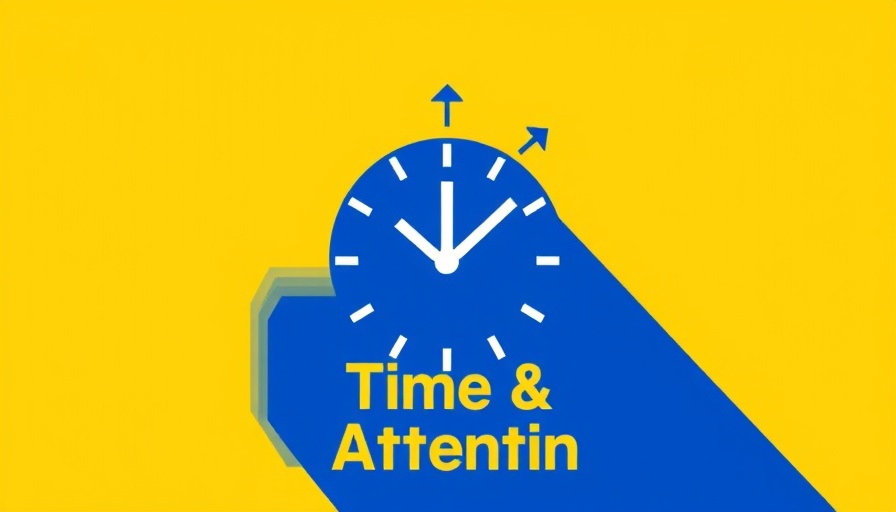
Understanding the Rise of the Anti-Hustle Movement
The concept of hustle culture, which glorifies excessive work hours and relentless productivity, is being challenged by a growing counter movement often referred to as anti-hustle or slow productivity. This phenomenon reflects a generational shift in how success is perceived, embracing balance over burnout. No longer content to chase endless tasks, a growing number of professionals are recognizing the importance of fostering a healthy work-life harmony, which can lead to greater fulfillment both personally and professionally.
In the video "I cut my work hours by 50% (and life got better)," the discussion dives into the anti-hustle movement and its principles, spurring deeper analysis of how reducing work hours can enhance both productivity and personal satisfaction.
Rediscovering Fulfillment Through Reduced Work Hours
As an executive or entrepreneur aged 35-55, you may often find yourself ensnared in a cycle of hustle that prioritizes long hours over meaningful outcomes. The experience shared in the video "I cut my work hours by 50% (and life got better)" highlights how drastically reducing work hours can yield remarkable benefits without sacrificing productivity. By trimming the workweek down to about 25 hours, the speaker has not only felt lighter but has also discovered a pathway to create high-quality work that reignites passion—an essential factor often lost in the grind.
Three Principles of Slow Productivity
At the heart of this anti-hustle movement lies the philosophy of slow productivity, which is built on three core principles designed to foster sustainable careers:
- Fewer Tasks: If your to-do list feels unmanageable, it's crucial to prioritize the most impactful tasks. Taking on fewer projects reduces "overhead tax," where the administrative burden of countless small tasks can sap energy and focus.
- Natural Pace: Working at a pace that feels organic allows for deeper engagement with work, leading to higher quality outputs. This principle advocates for rigorous timelines that acknowledge the complexity of knowledge work.
- Quality Focus: Emphasizing quality over quantity ensures that the work you put forth is not merely adequate but exceptional, creating long-lasting impressions and driving personal satisfaction.
From Burnout to Productive Calm
Many professionals are familiar with the feeling of constant stress and burnout, where diligent efforts yield little to no satisfaction. The struggle between ambition and the reality of exhaustion can strain personal well-being and relationships. Transitioning to a slow productivity mindset can enable individuals to realign their ambitions with their values.
For instance, rather than layering additional tasks onto an already full schedule, consider minimizing your commitments. This approach helps clear mental space and emotional bandwidth to focus on what truly resonates. In doing so, you may find that the time dedicated to fewer, high-priority activities directly correlates with enhanced creativity and overall output.
Counterarguments: The Hustle Culture Defense
Of course, there are advocates of hustle culture who might argue that hard work remains the cornerstone of success. However, while hustle can yield results in specific contexts—such as startups and high-pressure careers—it is essential to recognize that not all fields or roles benefit from an unyielding work ethic. High achievers have often attributed their success not to incessant work schedules but rather to a consistent pursuit of mastery over many years. This is where a balanced approach can sustain long-term productivity and health, while copious hours can often lead to burnout.
The Potential Risks of Embracing Hustle
Delving deeply into a hustle-centric lifestyle can yield detrimental effects on mental and physical health. The constant stress and demand placed on individuals can lead to anxiety, depression, and a host of other health issues. Furthermore, putting work ahead of personal well-being often leads to strained relationships, as family and friends find themselves low on the priority list.
Embracing the slow productivity principle serves as a safeguard against these adverse effects, promoting a notion of self-care, allowing individuals the space to recharge and ultimately enhance their productivity over time.
Practical Steps Toward Slow Productivity
To transition toward a slow productivity mindset, consider the following actionable insights:
- Assess your current tasks: Evaluate which activities truly add value and which ones may be distractions. Implementing a "less is more" philosophy will allow you to focus on core projects.
- Set realistic timelines: Strive for ambitious objectives that still respect your time and energy levels. This will facilitate a more balanced approach and the ability to enjoy your work.
- Invest in self-care: Emphasize incorporating downtime and leisure activities into your schedule. This not only reduces stress but also fosters inspiration for creative projects.
The Takeaway: A New Era of Work
The lessons learned from the video and slow productivity philosophy underscore the importance of responsible ambition. Acknowledging the limits of our capacity while pushing for meaningful outputs allows professionals to engage with their work authentically. By reconnecting with what matters most—such as family, health, and quality work—we can all work toward a future of greater satisfaction, efficacy, and enjoyment in our professional lives.
As executives and entrepreneurs grappling with the pressures of modern work, consider the principles of slow productivity not just as a trend, but as a holistic approach to maintaining health, happiness, and success in what you do. When you prioritize quality over quantity, remarkable changes can unfold.
 Add Row
Add Row  Add
Add 




Write A Comment